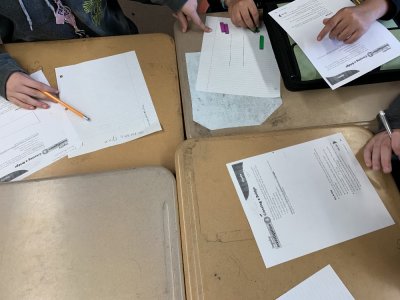Teachers Diving into Inquiry
Teachers Diving into Inquiry
Over the last years I have offered a course about inquiry-based learning to graduate students. These students are usually teachers that are working full-time in their own classroom while completing their professional licensure and master’s program.
During the course, we meet one a week in person or online to discuss readings and reflect on our teaching this week. I like the books “Taking Action” published by NCTM, which come tailored for elementary, middle and high school. Besides offering research based evidence for the teaching practices they recommend, they also include classroom videos and vignettes, and thoughtful teacher action plans for each chapter. I also visited their classes once, which allowed us to go even deeper in what they may be ready to try next.
This Spring I had two teachers taking my class by special arrangement, Lauren (4th grade) and Jackie (6th grade), and they decided to write blog posts about their experience. It was a wonderful experience for me to support them in changing their practice. While they had challenging questions for me about using more inquiry, they were always open to try a new idea and reflect on the impact.


